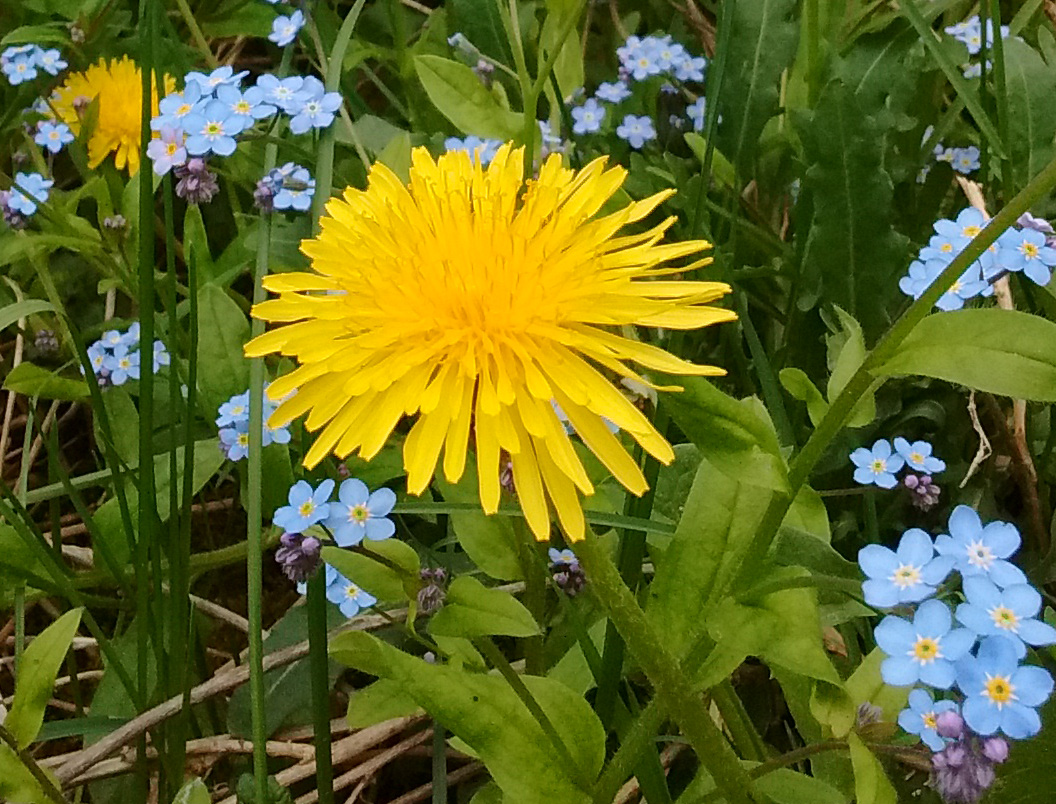Some of My Best Friends are Dandelions

Suzanne Hanna
It is true. I have given up on the war on dandelions. I have finally caught on to why dandelions are present everywhere and to the valuable role they play in the overall scheme of things.
The dandelion must be the most recognizable – and hated – weed worldwide. Many know its toothed leaves, yellow composite flowers, and seedy puff-balls. It is a perennial, herbaceous plant with a long, twisted and brittle taproot, and was introduced to North America by European settlers who wished to provide food for imported honeybees.
In the language of flowers, dandelions stand for coquetry. They have a number of nicknames: blowball, cankerwort, milk witch, monk's head, and my personal favourite, piss-a-bed. Dandelions gathered on Midsummer's Eve were believed to have the power to repel witches.
One of the valuable lessons I have learned from studying weeds is that they don't just appear. Mother Nature often uses weeds as indicators of what is right or wrong with the soil or site and if, as gardeners, we learn to read "weeds", we can often correct problems and improve our gardens. Dandelions, for instance, usually appear in lawns where the soil has become too acidic. This is often because grass clippings have been raked up and removed, in turn removing calcium from the garden. Dandelions can point to low fertility, compacted soil, drought, and improper drainage.
Dandelions are dynamic accumulators. In other words, their long taproot is designed to reach deep into the subsoil and pull up calcium that lawn grasses are unable to access. These plants work hard to break up hardpan or compacted soil. By aerating the soil and adding horticultural lime and compost, gardeners can build up nutrients within the soil and improve drainage. Couple these measures with mowing your grass at a good height (3 inches or more), and you will find that the ground is no longer welcoming to dandelions.
Dandelions make good companions for flowers because they aid in growth and offer an early source of nectar to bees and other beneficial insects like parasitic wasps and hoverflies. They are particularly handy for northern gardens with shorter growing seasons because their blossoms give off ethylene gas, which helps to speed up the ripening of fruit such as tomatoes.
Dandelions also make an excellent liquid fertilizer. Simply gather fresh dandelion roots, stems and flowers in the morning, place them in a pot and cover them with water. Bring the mixture to a boil, then cool and strain it. Dilute it by adding one-part of the dandelion mixture with four-parts water and add a bit of liquid soap and blend it all together. Spray the diluted mix onto the leaves of your plants and watch them flourish!
So this season, make dandelions an ally in your garden!
**
Suzanne Hanna is the chair of Seeds of Diversity's board of directors.
Not yet a member?
An annual membership to Seeds of Diversity gives you access to our seed exchange, seed grow-out programs, and our online news.

We depend on donations to do our work.

Thank you for your support!
